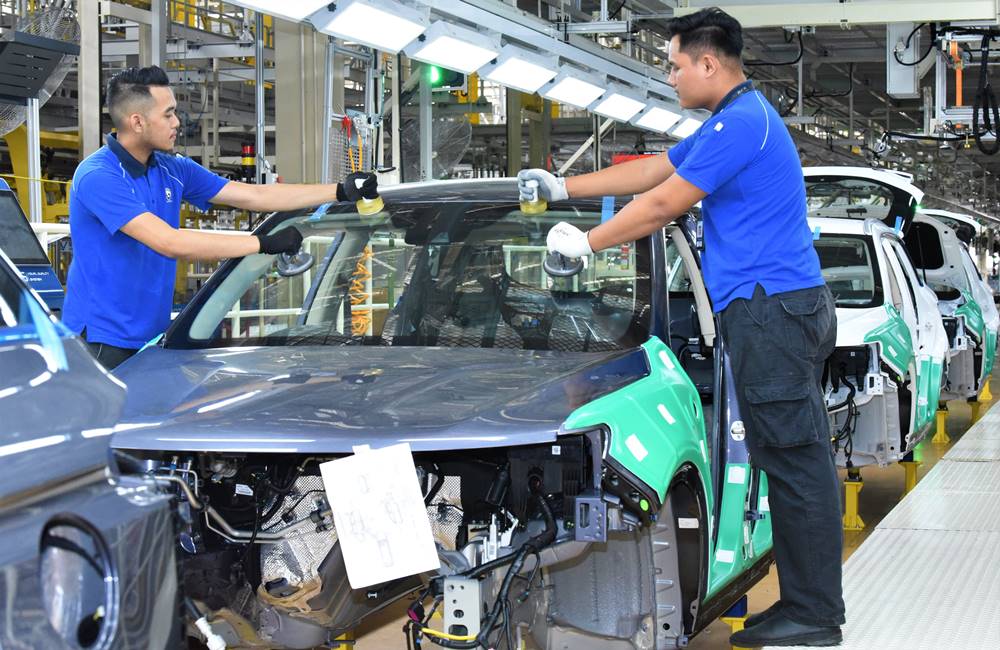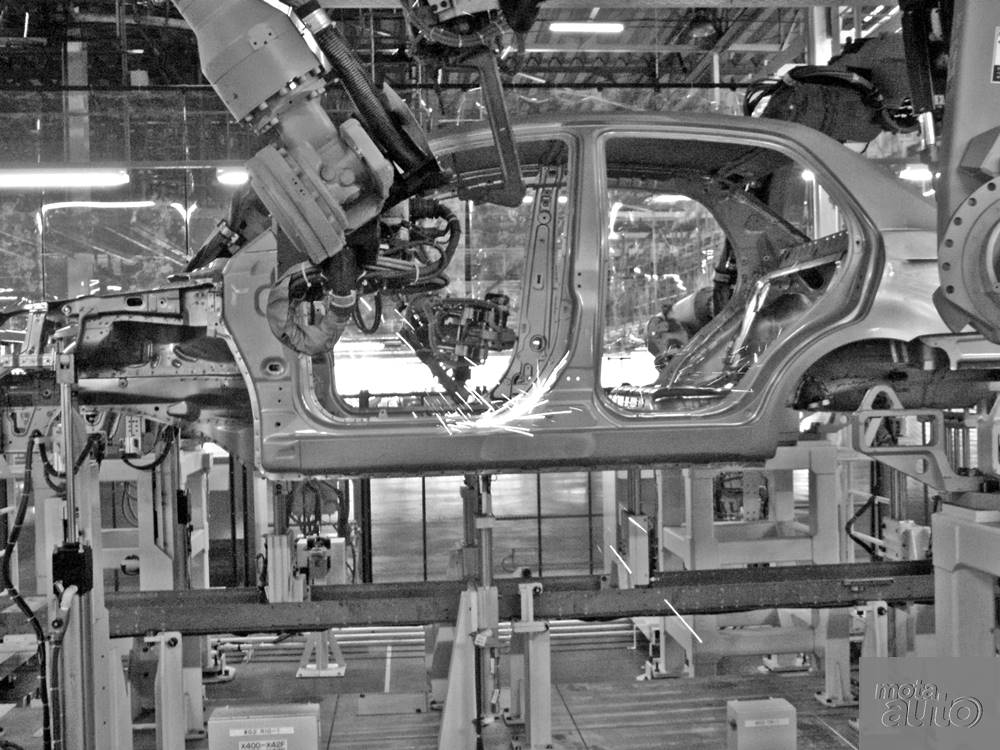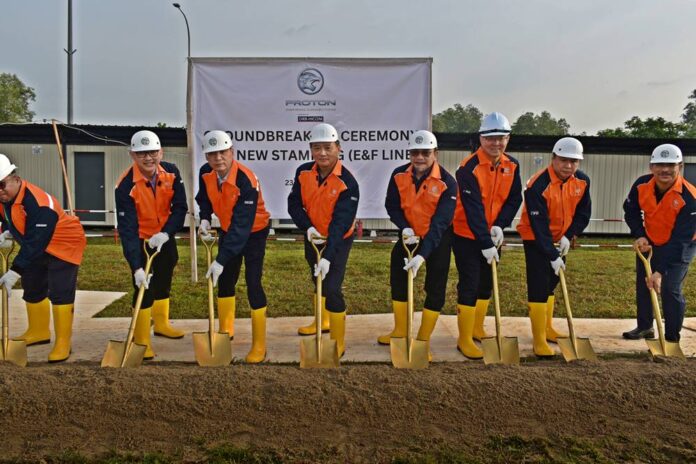Proton continues to expand the capacity of its manufacturing complex in Tanjong Malim, Perak with additional stamping facilities. These will increase the volume of parts that are stamped, in preparation for the transfer of production of the Saga from the Shah Alam factory by 2026.
The relocation of production of Proton’s bestselling model has been something which has been discussed for some time. With the move, it will allow all production to be consolidated at the factory in Tg. Malim which began operations at the end of 2003.

The additional stamping facilities which consist of 2 lines is costing Proton RM253 million. It is the second planned expansion of parts stamping capabilities in recent years after the inauguration of the D-Line stamping plant in March 2023.
Critical to Proton’s volume expansion plans
Speaking at the ground-breaking ceremony today, Dr. Li Chunrong, CEO of Proton Holdings Berhad, said: “The addition of the parts stamping E and F-Line are critical to Proton’s future volume expansion plans as it gives us more flexibility to ramp up our production and meet market demand.”
“For the whole of 2023 and up to June 2024, our Tanjong Malim plant has stamped 6,067,064 components, of which 395,211 were from the new D-Line. This number will grow exponentially when production for the Proton Saga is relocated here in 2026,” he said.

The new E-Line will have a 4-stage stamping process with a 1,600-tonne stamping machine and three 800-tonne machines while the F-Line will have a 5-stage stamping process utilising 2,000-tonne, 1,200-tonne and three 1,000-tonne stamping machines.
Robots will be used to transfer parts between workstations while IR 4.0 technology will be implemented using real-time data and machine-learning to improve the quality of parts produced.
Reducing reliance on imported parts
Additionally, the new stamping lines will help to further reduce Proton’s reliance on imported parts for its models, insulating the company against potential disruptions to global trade, and improving local parts supply.

Contributing to development of AHTV
At the same time, the investment further builds on competencies available in Tanjong Malim and will contribute towards the ongoing development of the Automotive High Tech Valley (AHTV) in the area.
“As Proton moves towards consolidating our production operations in Tanjong Malim, we continue to work towards increasing our local parts sourcing. Aside from cost and parts security considerations, we continue to champion the government’s aim to grow local participation in the automotive industry via job creation on multiple levels,” added Dr. Li.
Stamping is for the ‘big boys’
For those who may not be familiar with the auto industry’s workings, stamping facilities are among the activities that differentiate a manufacturing operation from just assembly.
When the auto industry in Malaysia began in the late 1960s, all the plants only carried out assembly from parts sent from factories in other countries.
This was known as the Completely Knocked-Down approach which is what CKD, a term you may often have seen in articles, refers to. In the CKD approach, items like body panels are stamped in factories in Japan or Europe and packed in boxes (CKD packs) and shipped to the Malaysian plants.

Over time, some parts – such as tyres, paint, windscreens, wire harnesses, seats and exhaust systems – have been made here as the government has promoted local production to grow the auto industry as a whole.
However, for body parts, this has not been possible as the huge machinery which presses the metal parts into the required panels are very expensive and a very large production volume is required to make it worthwhile to have this process.

It was only when Proton was established as a national project that the huge volumes were available for the first time. The Proton factory in Shah Alam, Selangor was the first in the country to have stamping presses, making it unnecessary to depend on Mitsubishi Motors’ factory for body panels for the Saga (and other models).
Over time, as the volumes of some of the other brands increased significantly, stamping of some body parts was also done at the assembly plants on a small scale. Nevertheless, volume is still important and unless there is an assurance of a high volume that can be sustained, the company may not make the heavy investment in stamping facilities.



Though body panels are the most visible parts stamped as they are large, there are many different types of metal parts stamped by smaller machines as well. These include chassis components like crossmembers and suspension brackets, as well as parts for the engine such as valve covers, oil pans and engine mounts.
Stamping on a large scale, as what Proton does, is what separates the ‘big boys from the small ones’ in the auto industry.

